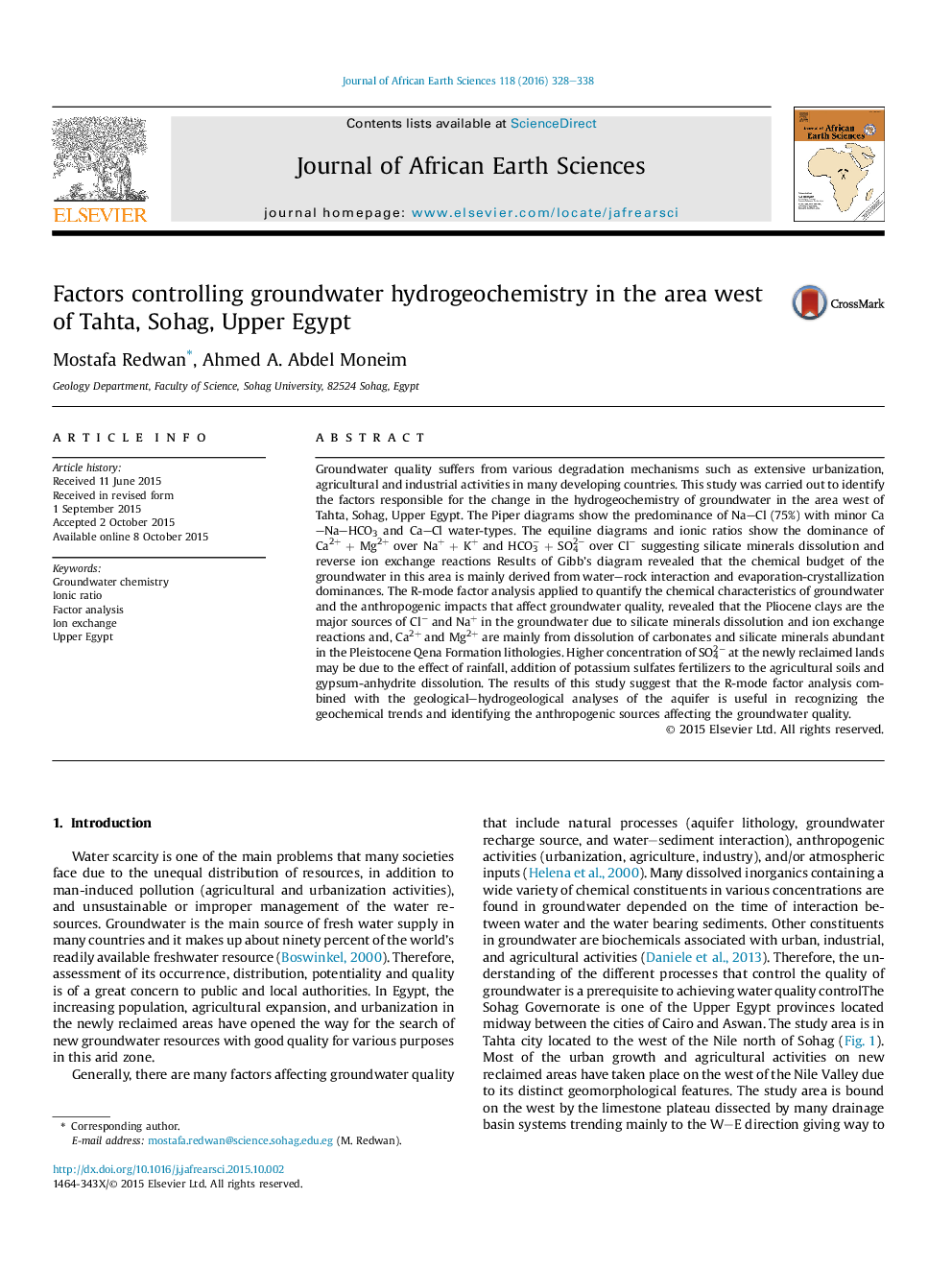| کد مقاله | کد نشریه | سال انتشار | مقاله انگلیسی | نسخه تمام متن |
|---|---|---|---|---|
| 4728448 | 1640190 | 2016 | 11 صفحه PDF | دانلود رایگان |
• Sixteen groundwater samples were collected from the area west of Tahta, Sohag, Egypt.
• Piper diagram showed the predominance of Na–Cl type (75%) in groundwater.
• Dissolution and ion exchange reactions are the main source of ions in the aquifer.
• Anthropogenic inputs due to using fertilizers impact the new reclaimed areas.
• The R-mode factor analysis helped in recognizing the main inputs in the aquifer.
Groundwater quality suffers from various degradation mechanisms such as extensive urbanization, agricultural and industrial activities in many developing countries. This study was carried out to identify the factors responsible for the change in the hydrogeochemistry of groundwater in the area west of Tahta, Sohag, Upper Egypt. The Piper diagrams show the predominance of Na–Cl (75%) with minor Ca–Na–HCO3 and Ca–Cl water-types. The equiline diagrams and ionic ratios show the dominance of Ca2+ + Mg2+ over Na+ + K+ and HCO3− + SO42− over Cl− suggesting silicate minerals dissolution and reverse ion exchange reactions Results of Gibb’s diagram revealed that the chemical budget of the groundwater in this area is mainly derived from water–rock interaction and evaporation-crystallization dominances. The R-mode factor analysis applied to quantify the chemical characteristics of groundwater and the anthropogenic impacts that affect groundwater quality, revealed that the Pliocene clays are the major sources of Cl− and Na+ in the groundwater due to silicate minerals dissolution and ion exchange reactions and, Ca2+ and Mg2+ are mainly from dissolution of carbonates and silicate minerals abundant in the Pleistocene Qena Formation lithologies. Higher concentration of SO42− at the newly reclaimed lands may be due to the effect of rainfall, addition of potassium sulfates fertilizers to the agricultural soils and gypsum-anhydrite dissolution. The results of this study suggest that the R-mode factor analysis combined with the geological–hydrogeological analyses of the aquifer is useful in recognizing the geochemical trends and identifying the anthropogenic sources affecting the groundwater quality.
Journal: Journal of African Earth Sciences - Volume 118, June 2016, Pages 328–338
